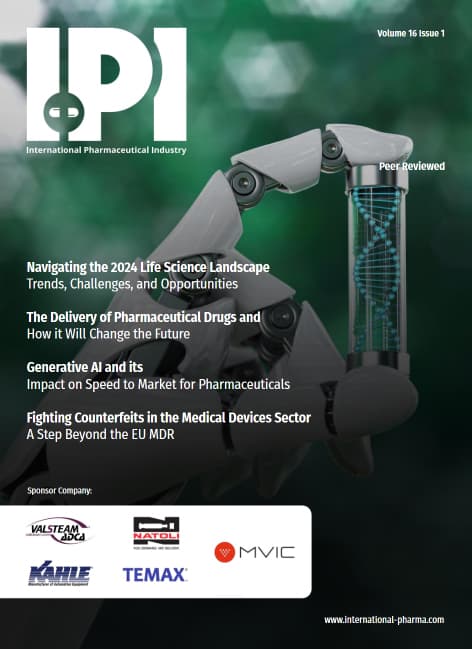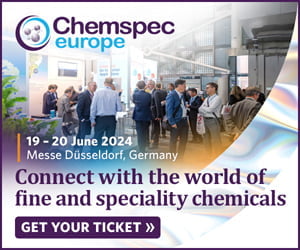
In this Q&A article with Dr Iain Moore, President of EXCiPACT – ahead of his keynote session at CPhI Discover (17th-28th May 2021), global pharma’s largest ever virtual gathering – the CPhI Discover team explores the duality of excipient variability and QbD. Along with how pharma and biotech customers should partner earlier with excipient providers to get a better understanding of not just the chemistry and purity of ingredients, but also how excipients work best in real-world formulations.
CPhI Discover: How do you think excipients fits with the drive for QbD in pharma?
Dr Iain Moore: I am a quality assurance professional, so I will say that putting time into design will always pay you back in quality terms in your operations. That is, after all, the essence of validation throughout the industry, which is to ensure that the design phase of whatever that is your doing is being controlled and the science is fully understood. I think what we need, or what QbD perhaps doesn’t dig into enough, is how to minimize variability. So for me, the big trend in excipients is how can we squash variability.
CPhI Discover: We produced a report for CPhI recently which explored excipients, QbD, variability and the idea that sometimes an entirely pure product maybe loses some of the interaction that was critical to the product. How do equate this?
Dr Iain Moore: The pursuit of purity is always important in many regards, but what I think we sometimes forget, and we get too blinkered with is; it’s not purity that matters, it’s the toxicology that matters. I’ve seen examples very recently where enhanced purity has been delivered and it’s great chemically, but when we mix it with the active, the formulation stability is worse. That is very counterintuitive. What that is suggesting to me is the concomitant component of the excipients is actually very beneficial in stability.
Unlike the API, excipients are often very messy chemically, with multiple components in there. The classic is Polysorbate-80 and if you could put that sample in a GLPC you will get a hedgehog, and the question is which ones the impurity? You can’t answer it because the answer is none of them, they are the excipient. Does it matter? No, because it’s the mixture which gives it its performance as a surfactant, as a soluble isomer.
CPhI Discover: Do you think Pharma needs to partner more widely?
Dr Iain Moore: Pharmaceutical companies need to integrate more with their suppliers especially excipients. Those suppliers are the ones with a high scientific knowledge and, in many cases, have the best understanding on how to use the excipient in products. Certainly, when it comes to the traditional excipients, they may have decades of experience. This will help reduce variability and pharma companies can concentrate on innovating.
CPhI Discover: Should excipient manufacturers be involved earlier in product development cycles?
Dr Iain Moore: Yes, especially in formulation development. It is an area where both parties can collaborate more closely. And again, from the excipient suppliers, it’s about understanding the critical properties, especially in the final product. When you utilize the excipient in the drug product formulation, you don’t care what it looks like chemically, it’s what it does that is important. Is it a surfactant? Is it going to solubilize the active or is it going to encapsulate it in a lipid shell for example?
The challenge is that there is often a disconnect between the properties you need for drug product delivery and those the manufacturer can control in terms of chemistry and physical properties. It is still an area of science not very well understood; why does this molecular shape have this property?
CPhI Discover: What do you think the big trends are for the excipient market in the next, maybe two years, five years looking further head.
Dr Iain Moore: In order to predict where we’re going to be in the future, we’re going to have to look at the last five years, draw a line to today and extrapolate. The line has probably jumped now due to the events over the last year, but I do see more regulatory scrutiny coming for excipients. We see trends, for example, in France where we see the regulatory authority is now routinely inspecting French excipient manufacturers and the same in Brazil. So how much longer before everybody must have that on the agenda and will make sure that we’re making good quality excipients by design.
This also potentially means a bigger role of EXCiPACT. For example, as I say to my Croda customers, ‘sure come in and audit us’, but really, they’re duplicating the EXCiPACT audit. I would much rather that they invest that time coming to us about how to make the excipient better, how to bring it under control to reduce variability, how to improve performance and I think that’s a much more productive investment in time. I hope in the future that we can use EXCiPACT as a certification scheme to utilize that time and resource to improve the overall performance of the excipient and the drug product formulation.
Overall, I think the industry should be optimistic for the next few years. If all parties come together and work constructively together; regulators, legislators, suppliers we can achieve great things. For example, if there is an urgent medical need for the new excipient, ok let’s work on that together, as even the biggest pharmaceutical companies probably can’t do it all on their own anymore. To advance science more quickly, we must learn to partner earlier with the right scientists and use real-world experience to ensure we develop better products and faster.
Author Profile:
Dr. Iain Moore is President of EXCiPACT and represents IPEC Europe. Outside his role at EXCiPACT, he is Global Head of Quality Assurance at Croda Europe Ltd, a manufacturer of speciality and performance chemicals based in the United Kingdom.
























